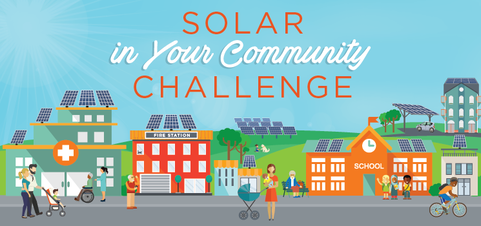
By Jill Cliburn
Of course the answer is yes. While in some locations, community solar is nearing its useful life as a simple wake-up call for utilities to look at solar, that hardly the case everywhere. Moreover, community solar can help take care of particular needs that are daunting for most utilities to serve. And it can add much-needed load management and resilience value to the local system. I may have said this before, but the examples just keep coming—and getting better.
In terms of addressing difficult community needs, the potential for community solar to serve low- to moderate-income customer needs is striking. The opportunity to lock in lower energy prices or to leverage benefits like improved housing options, equity and jobs development for under-served communities can be a game-changer. Check out the winners of the US DOE Solar in Your Community Challenge, just announced. That national multi-year program drew participants from communities nationwide. DOE called out 17 award-winners, which take the familiar model for community solar and adapt it—or reinvent it—to overcome policy, market and economic hurdles. These programs are compatible with increasing renewables in the overall utility portfolio, while drawing out the particular benefits that local, strategic program designs can deliver.
The days when PV for low-income communities amounted to a photo-op are over. Challenge winners are aimed at replication, scaling up to MW or tens of MW and backed by financing partners ranging from banks, to corporate co-sponsors, to an emerging field of impact investors. One winning project is was submitted by the Kerrville, TX, rural electric cooperative, implementing solar PPAs for four projects on land leased from local nonprofits. The potential for national replication is obvious. While large, centralized renewable energy projects should represent the bulk of utility portfolios in coming years, there is plenty of room for local solar resources that deliver important, though harder-to-monetize benefits.
That does include solar-plus-storage. The Challenge program saw at least one notable solar-plus design—a project designed for resilience and submitted by the Blue Lake Rancheria, an indigenous community in California.

Though it would be a trailblazer, the Minnesota Power project with Grand Rapids would not be the first community solar plus project in the US. We know of several community solar projects that use storage and more that are underway. Usually the storage is a utility-provided companion that “sweetens” a customer-supported solar project. One early example that approached this model was completed by Austin Energy a few years ago. Another, following a model very similar to the one proposed for Grand Rapids, is fully subscribed and saving hundreds of thousands of dollars in demand charges at the Sterling, MA, municipal utility.
We spoke at the Peak Load Management Alliance Conference in Minneapolis this week, addressing not only the option of solar-plus battery storage, but also the opportunity for community solar to pair up with other, customer-side load management strategies. We considered the easy case—for a locally controlled utility—and the challenges of doing that in a market where legislation requires community solar to be administered by a non-utility entity. In the latter case (envisioned in proposed community solar legislation for New Mexico among other places), the community solar developer might receive some incentive to work with the utility, in the interest of co-locating a battery with the community solar project.
The opportunities for transforming solar kWh from “plain vanilla” to “Cherry Garcia” (or whatever your favorite premium-value flavor might be!) are emerging fast. The benefits are technically appealing and appealing to customers, who remain at the very center of any effort to decarbonize and sustain reliable, 21st Century electric service.

